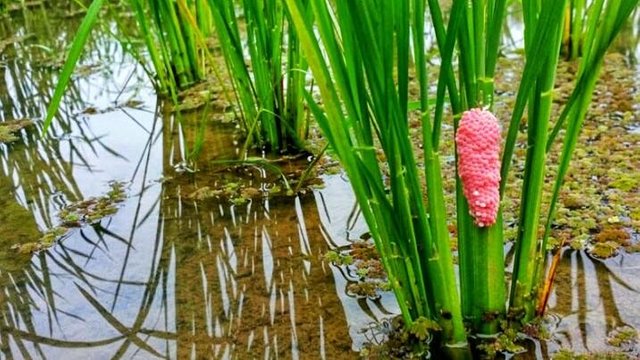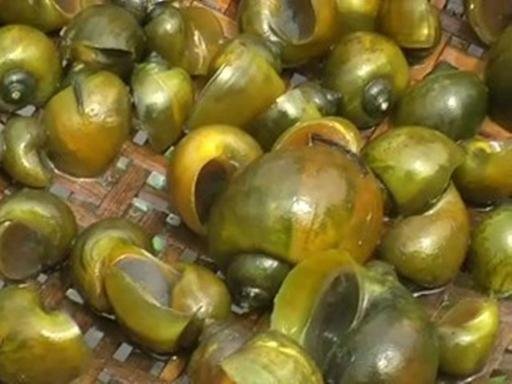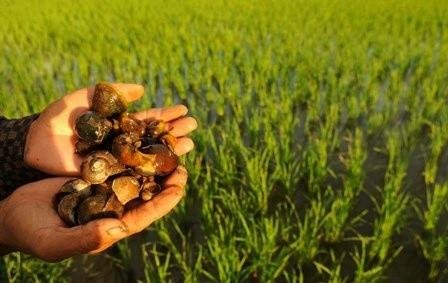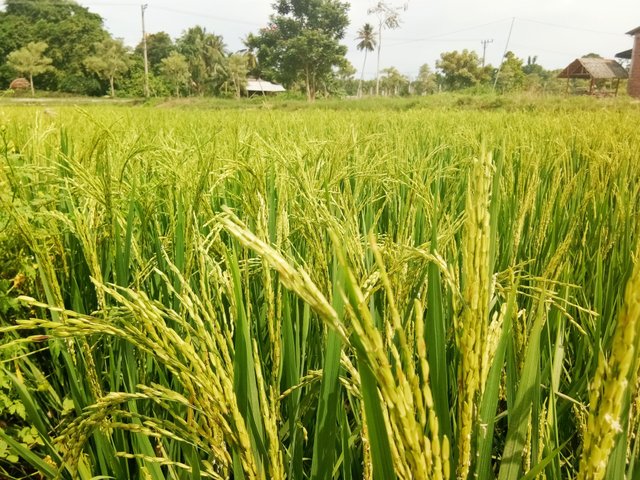hello steemian, in my second post about oryza sativa I will explain the pests that are often found in the plant is snails in scientific language Pomacea canaliculata.


The conch (Pomacea canaliculata) is a rice field snail with colora golden shell that is considered to be one of the pests in rice production. Conch is called a pest because it becomes a rice-planter in the area.
rice paddy and eggs attached to rice stalks cause crops dead rice. The mas snail has special characteristics that can be used for distinguish with other types of conch life on the same life. Adult golden snail has a brown shell and colored flesh creamy white to reddish. Body size varies and depends on food availability. The snail food is generally a plant still young and soft, such as rice seeds, vegetables, and water hyacinth (Budiyono 2006).
The main factor that makes the snail mas difficult
eradicated is a high adaptability so it can live in various types of habitat. Besides it's the high reproduction power that is characterized by the number of eggs reaches ± 8,700 grains per season reproduction and its ability to survive on dry environmental conditions (estivation), as well
be the reason why the golden snail is abundant
the amount is in nature and categorized as pests
(Yusae / tf /., 20).
Classification of Pomacea canaliculata (Cazzaniga 2002)
| Phylum, | Molluscs |
| Class, | Gastropoda |
| Subclass, | Prosobranchiata |
| Order, | Mesogastropoda |
| Family, | Ampullariidae |
| Genus, | Pomacea |
| Species, | Pomacea canaliculata |
Pest control Conch On Rice Field
Using natural enemies removing ducks in the rice field before planting and after harvest for eating young and small snails.
Using traps of materials used netting or sack burlap placed on the puddle rice fields are inundated and given a favorite meal golden snail like coconut, banana, papaya, rice, waste vegetables. Trap was installed later in the afternoon on the day of the snail
collected taken.Dry the fields if they occur the attack is big enough and make puddles in the fields for facilitate the collection of golden snail.
Plug in a wood or bamboo pedal along near the embankment to facilitate the collection.
Use plants that contain vegetable pesticides are put on rice water such as: leaf tobacco, tubal roots, areca nut, gadung wet, leaves sembung, leaves neem
and mindi leaves.Sow ash powder or coarse powder litter of wood in place of attack snails. if absorbed in the shell will result.


thank you for reading my post and thank you very much for upvote. do not forget to follow me And wait for the next post.
follow @rabo
Nice post @rabo.....good job
Downvoting a post can decrease pending rewards and make it less visible. Common reasons:
Submit
Thanks so much Bg @irwanumpal
Akan saya upgrade selalu Kemampuan saya.
Terimakasi juga atas motivasi motivasi nya Bg
Downvoting a post can decrease pending rewards and make it less visible. Common reasons:
Submit
Sangat bermanfaat postingan nya
Thanks so much @rabo
Downvoting a post can decrease pending rewards and make it less visible. Common reasons:
Submit
Managing the pests of rice plants is crucial for ensuring a healthy and productive crop, and effective solutions often involve collaboration with pest control experts. In regions like Durham, where agriculture plays a significant role, the expertise provided by durham region pest control and you can visit https://contactpestcontrol.ca/durham/ becomes invaluable. The control and prevention of pests, ranging from insects to diseases, are essential to safeguard the rice plants from potential damage. Employing sustainable and environmentally friendly pest control methods, professionals in Durham Region Pest Control contribute to maintaining the balance of the ecosystem while ensuring the optimal growth of rice crops. Their knowledge and proactive measures play a pivotal role in mitigating the impact of pests, preserving crop yields, and supporting the agricultural backbone of the region.
Downvoting a post can decrease pending rewards and make it less visible. Common reasons:
Submit